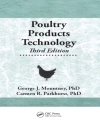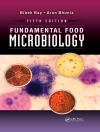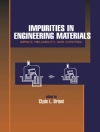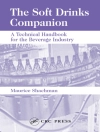The exponential increase of the Internet of Things (Io Ts) has revolutionized lives, but it has also resulted in massive resource consumption and environmental pollution. In conjunction with Green Io Ts (Gio Ts), there is a parallel effort to create highly sensitive devices by device design to conserve power. Furthermore, numerous applications require deciphering information from very weak optical signals, such as from radiation, medical imaging, industrial non-destructive testing, quantum technologies, astronomy, and various other such routine measurements. It is necessary to design photodetectors with high photosensitivity using various technological innovations to reduce the noise level, such as with two inversely directed barriers, as proposed by the authors, in which the currents of devices mutually compensate each other and create low dark current with high photosensitivity thresholds. The implementation of internal amplification of photocurrents in them can provide high photosensitivity. The book presents the mechanism for the injection amplification of the photocurrent in devices based on cadmium telluride and silicon with a high-resistance sublayer, as well as the study of creating highly sensitive devices, that are resistant to radiation of optical and X-ray ranges of electromagnetic waves. Particular attention is drawn to the mutual compensation process for photocurrents arising in opposite potential barriers covering the layer during longitudinal absorption of radiation in the sublayer. Using structures on the base cadmium telluride and silicon, as an example, the phenomenon of a change in the sign of the spectral photocurrent and the possibilities of wave measurement is provided by this phenomenon. Photoelectronic processes occurring in these semiconductor structures are investigated, and expressions are obtained that relate the parameters of optical radiation and the structure. The algorithm developed using these expressions is based on a new spectral analysis mechanism, which is implemented to prepare inexpensive, reduced dimensions with the need for less materials, and energy-intensive devices. All this is considered in the context of solving urgent problems of quantitative remote identification of the components of an optically transparent medium. The global spectral analysis market is focused on the development of semiconductor photodetectors with spectral-selective sensitivity for spectral analysis. The use of such a photodetector in spectrometry will eliminate the use of opticalmechanical systems due to the new physical principle used in it and will ensure high resolution and reliability of spectrum recording. As environmental threats become increasingly unpredictable, there is also a growing need to develop remote spectral analysis, identification, and assessment of substances in air, water, and food, assessment of the effects of substances on humans, animals, and vegetation, and detection and elimination of pollution sources. Here, the spectral analysis of the electromagnetic radiation transmitting the information from the object with the help of primary sensors is essential.
Tentang Penulis
Prof. Surik Khaudaverdyan was born in 1952 in Georgia. He graduated from Polytechnic Institute in Yerevan, and graduate school in Moscow. He worked in NA ASSR, as a junior researcher in charge of the department. 1981 Ph D, 2005 DSc. 1987 NPUA Assistant Professor, 2007 Prof. 2006 – head of the department, since 2011 – head of the science laboratory. Member of the council for the thesis jury and the editorial board of the journal ITERE. Managed international and national scientific projects. Received commemorative medal award from the Prime Minister of RA, the gold medal of NPUA. He was selected for the Laureate of the RA President’s Award. He is the author/editor of 4 books and has published over 130 articles in scientific journals, book chapters, and conferences.
Prof. Ashok Vaseashta is a researcher and Executive director of research with the International Clean Water Institute in Virginia, USA. He received a Ph.D. from the Virginia Polytechnic Institute and State University, Blacksburg, VA in 1990 followed by Kobe’s post-doctoral fellowship. He has served as a Professor at Virginia Tech and Marshall University. His honorary appointments include being a professor at the Transylvania University of Brasov; Chaired Professor of Nanotechnology at the Ghitu Institute of Electrical Engineering and Nanotechnologies, Honorary member of the Academy of Sciences of Moldova; Academician at the Euro-Mediterranean Academy of Arts and Sciences, member of CIRET, France, and Senior Strategic Research Advisor for several organizations. Inspired by nature and guided by societal necessities, he strives for technological innovations to address the global challenges of the 21st century. His research interests span nanotechnology, environmental/ecological science, heuristics, and critical infrastructure safety and security. He is the author/editor of 14 books and has published over 350 articles in scientific journals, book chapters, and conferences. He serves on the editorial boards of several prestigious international journals and is an active member of various professional organizations.












